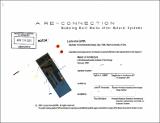A re-connection : modeling built works after natural systems
Author(s)
Griffith, Laurie Anne, 1973-
DownloadFull printable version (29.08Mb)
Alternative title
Modeling built works after natural systems
Other Contributors
Massachusetts Institute of Technology. Dept. of Architecture.
Advisor
John E. Fernandez.
Terms of use
Metadata
Show full item recordAbstract
The constructed world is full of built works that consume energy and emit unusable waste. This is fostered by the act of 'masking' the true situation and the lack of embedded feedback, associated with the destructive operations of centralized, unintelligent systems. This inefficient organization encourages the destructive processes of production and consumption to remain unaccountable, broadening the disparity between the built environment and the natural ecosystem. Similarly, there is an increasing social disconnection between people and the natural environment, signified by less time spent outdoors and particular advancements in building technology. In order to counter this trend, this thesis takes the position that it is imperative to become more ecologically and socially interconnected. To accomplish this, it is necessary to draw from the efficiency and interdependency of the natural environment; therefore, built systems must model themselves after natural systems. In response to this need, I have proposed built works as net producers of energy, inherently giving to the livelihood of the whole, and partiCipating in an expressed, dynamic built world eco-system/place. This intention was initially addressed by establishing criteria to re-define the relationships between existing built works and energy production, motivated by the notions of a whole-systems methodology <3.1>, renewable energy production and recycling <3.2>, and social involvement and influence <3.3>. The design intention was then executed by focusing on both energy flows and available renewable energy sources, coupled with a process of un-masking and re-connecting in order to heighten awareness, respect, and delight in the context of the built environment. As the set of criteria was conceived, a 'typical' urban site was chosen on which to integrate and test these intentions. The following design exploration addresses the means employed to transform the existing site into an energy producing system of entities, and an ecologically and SOCially interconnected built place.
Description
Thesis (M.Arch.)--Massachusetts Institute of Technology, Dept. of Architecture, 2001. Some pages folded. Includes bibliographical references (p. 123-125).
Date issued
2001Department
Massachusetts Institute of Technology. Department of ArchitecturePublisher
Massachusetts Institute of Technology
Keywords
Architecture.